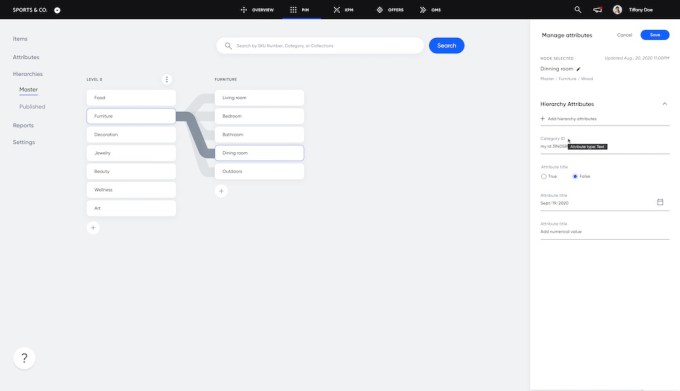The pandemic-fueled economic uncertainty of the last year has led many to project that the rate of credit defaults among consumers will continue to wobble into 2021. Today a startup that has built a platform to help consumers mitigate that situation is announcing some funding on the back of more demand for its services.
Symend, which builds behavioral analytics that integrate with customer engagement products to help identify customers having trouble paying bills, and then suggests payment alternatives to keep them from defaulting altogether, has picked up $43 million in funding.
The money is an extension to its Series B, closed in May of last year, bringing the total for the round to $95 million, and over $100 million for the Calgary, Canada startup since being founded in 2016.
Inovia Capital is leading this latest funding injection, with other unnamed investors participating.
Symend is not disclosing its valuation but Hanif Joshaghani, Symend’s CEO who co-founded the company with Tiffany Kaminsky (the startups CMO), said that it comes on the heels of a “massive uptick” among enterprises investing in solutions to help support customers finding it hard to meet payments.
“Customer uncertainty has been extremely high and service providers don’t have the capacity to support the mass volumes of inquiries in a way that effectively resonates with and empathetically reassures customers,” he said in an interview.
The startup has been working primarily with clients in telecommunications, financial services, utilities and media and claims to have two-thirds of the major telecommunications providers in North America, as well as a multinational bank, as customers.
Last year, Symend said it was on track to work with 100 million customers (that is, customers of its clients) by the end of 2020, and we are asking the company whether it has passed that number.
The startup’s aim is twofold: it identifies when their customers are having trouble paying bills, and offers those customers alternatives beyond simple deferrals, which for many just put off addressing the issue.
At the same time, Symend’s solution is not just about avoiding deferrals: the company’s solutions aim to provide assistance and alternatives to companies that are seeing an overwhelming amount of traffic in its customer service operations.
Deferrals, however, remain a key point: Most service providers have been offering deferral periods this past year as their first-line approach to avoiding defaults. But Joshaghani said he believes that deferrals “can provide a false sense of financial security for customers.”
That, in part, is because those customers are usually deferring more than one bill.
A survey the company conducted in July among 500 of its users found a 27% increase in people falling behind in bill payments between April and July 2020, with those falling behind typically doing so on an average of three bills: 55% on at least one loan; 37% were behind on mortgage/rent; 21% were behind on their line of credit; 52% were behind on credit card payments.
Missing payments, and any personal financial trouble, is usually tied in with more than simply not having money: there can be job losses, illness, family trouble, and much more behind why someone finds himself or herself missing a bill deadline.
Symend therefore tries to take a sensitive approach both to identifying when problems are arising, and addressing them.
“Given that Symend’s primary goal is to save customers from negative outcomes, we deployed strategies with our clients to ensure customers felt supported and empowered to act and avoid bills piling up through the deferral period,” Joshaghani noted. “By engaging customers with empathetic communications, self-serve tools and flexible repayment options, Symend has helped leading enterprises provide customers with a positive experience in an otherwise highly uncertain and stressful time. By empowering customers to act through digital tools, Symend alleviates pressure from overwhelmed call centres, increases customer satisfaction, lowers operating costs and helps customers resolve past due bills before they reach collections.”
As we have described before, Symend’s staff is around 25% behavioral science PhDs, but it does not go into a lot of detail about how it works, or the approach that it takes in evaluating customers. It uses data from businesses themselves, and combines that with third-party resources (not unlike the data trove that many AI-based fintechs might use to, say, weigh up the eligibility of a person for a particular loan at a particular interest rate).
Kaminsky notes that the last year of business has seen the company make more investments into its algorithms and analytics.
“Using our behaviorally informed algorithms, Symend can identify and distinguish between key variations in customer behavior to personalize and optimize interactions based on the unique preferences of the individual,” she said. “Symend’s AI/ML model takes this a step further by combining insights from customer interactions with historical data on actions taken. These insights help Symend discover underlying psychological and behavioral traits to determine which engagement strategies will positively shape behavior.”
Then to capture customer sentiment and further iterate on these strategies, she says that Symend uses NLP processing models to automatically categorize sentiment based on provided responses to communications and within self-serve tools. “Our metrics are shaped with the end goal of building a consistently positive brand experience that extends far beyond past due bills, which is why our AI/ML model uses sentiment analysis and engagement scoring,” she said. “This ultimately ensures that communications resonate with the customer’s unique and evolving needs, creating a consistently positive experience that retains customers.”
Going ahead, the company is going to use the funding to continue hiring, in particular internationally, with a focus on opening up operations in Latin Americas and Asia-Pacific regions. It’s also going to be investing in expanding its products to include customer retention and acquisition tools, alongside more investment in expanding its product to help people avoid defaults on bills.
“We are big believers in Symend’s mission to add lasting value to enterprises, by helping their customers avoid collections,” said Dennis Kavelman, Partner at Inovia Capital, in a statement. “Their approach is differentiated and effective because it combines behavioral science and data science to drive a personalized approach for each customer. With this new investment, Symend is well funded to execute its strategy of scaling globally, and to partner with large enterprises in many industries.”




